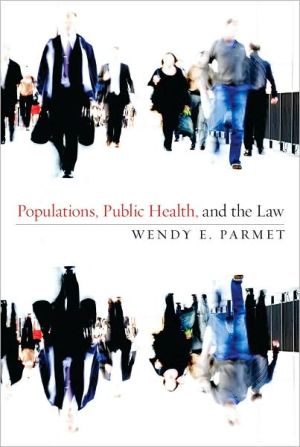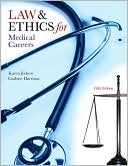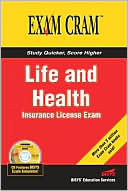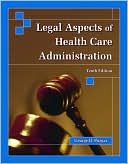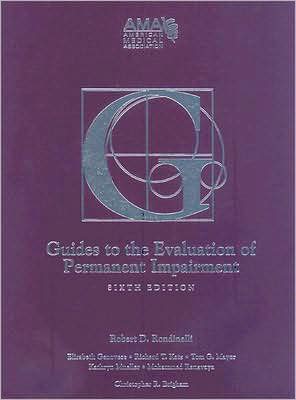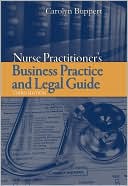Populations, Public Health, and the Law
Law plays a crucial role in protecting the health of populations. Whether the public health threat is bioterrorism, pandemic influenza, obesity, or lung cancer, law is an essential tool for addressing the problem. Yet for many decades, courts and lawyers have frequently overlooked law's critical importance to public health. Populations, Public Health, and the Law seeks to remedy that omission. The book demonstrates why public health protection is a vital objective for the law and presents a...
Search in google:
In this groundbreaking work legal scholar Wendy E. Parmet explores a wide range of critical issues, including food safety, death and dying, and pandemic preparedness. She demonstrates how a population-based legal analysis, one that recalls the importance of populations and uses the tools of public health, can enhance legal decision making while protecting both public health and the rights and liberties of individuals and their communities. Doody Review Services Reviewer:Daniel Swartzman, JD, MPH(University of Illinois at Chicago School of Public Health)Description:Prof. Wendy Parmet's book has a clear point of view, that the law should be judged, in part, by its ability to produce an increase in the healthiness of the population, an approach referred to as "population-based legal analysis.Purpose:Prof. Parmet is advocating for this particular view of the law, which is based upon three core elements. First, that populations affect the law and are affected by the law. Second, that there ought to be a "normative stance toward population health." If the law promotes public health, then that is a "positive good." And third, the law ought to incorporate the empirical and probabilistic analyses of traditional population-based approaches to health alongside the analogical and deductive reasoning that are the current accepted heuristics in the legal profession. This is an interesting and potentially important thesis, and Prof. Parmet does a good job of explaining and exploring it.Audience:The audience for this book is broad. It will be useful to academics in law schools and in schools of public health, both as a treatise and as a text. It has some use as an extended essay for practicing lawyers. Prof. Parmet is a well-known and highly respected author, and this will add to her reputation.Features:The book looks at how population-based legal analysis differs from more common perspectives, like the law and economics approach, and more traditional public health law critiques. It examines how this analytical view would play out in a variety of public health law arenas, like obesity prevention and control, the uses of tort law in public health, food safety, etc.Assessment:As a professor at a school of public health, I would consider this book for my class in law and public health. It has enough of the intellectual history that is sometime lacking in other such books, it has a well-argued perspective which will give students something to respond to, and it covers most of the topics needed in such a class. I didn't see much on property law or contract law, fundamental parts of American jurisprudence that have their place in public health's efforts to control problems such as pollution, lead poisoning, food labeling, etc. But that is a quibble. As a practicing plaintiff's lawyer, I would predict that if the courts were willing to accept Prof. Parmet's suggestions, pursuing justice for victims of poor public health practices would be much easier. Although I think such changes are unlikely to happen anytime soon, they wouldn't happen at all unless someone suggests them with reason and clarity, as Prof. Parmet does in this book.
Acknowledgments ixAbbreviations and Acronyms xiIntroduction 11 Public Health and the Population Perspective 52 Public Health and American Law 283 Toward a Population-Based Legal Analysis: The Supreme Beef Case 514 Population Health and Federalism: Whose Job Is It? 785 Individual Rights, Population Health, and Due Process 1096 A Right to Die? Further Reflections on Due Process Rights 1417 The First Amendment and the Obesity Epidemic 1668 A Population-Based Health Law 1919 Tort Law: A Population Approach to Private Law 21910 Globalizing Population-Based Legal Analysis 24411 The Future of Population-Based Legal Analysis 267Table of U.S. Cases 277Index 283
\ Reviewer: Daniel Swartzman, JD, MPH(University of Illinois at Chicago School of Public Health)\ Description: Prof. Wendy Parmet's book has a clear point of view, that the law should be judged, in part, by its ability to produce an increase in the healthiness of the population, an approach referred to as "population-based legal analysis."\ Purpose: Prof. Parmet is advocating for this particular view of the law, which is based upon three core elements. First, that populations affect the law and are affected by the law. Second, that there ought to be a "normative stance toward population health." If the law promotes public health, then that is a "positive good." And third, the law ought to incorporate the empirical and probabilistic analyses of traditional population-based approaches to health alongside the analogical and deductive reasoning that are the current accepted heuristics in the legal profession. This is an interesting and potentially important thesis, and Prof. Parmet does a good job of explaining and exploring it.\ Audience: The audience for this book is broad. It will be useful to academics in law schools and in schools of public health, both as a treatise and as a text. It has some use as an extended essay for practicing lawyers. Prof. Parmet is a well-known and highly respected author, and this will add to her reputation.\ Features: The book looks at how population-based legal analysis differs from more common perspectives, like the law and economics approach, and more traditional public health law critiques. It examines how this analytical view would play out in a variety of public health law arenas, like obesity prevention and control, the uses of tort law in public health, food safety, etc.\ Assessment: As a professor at a school of public health, I would consider this book for my class in law and public health. It has enough of the intellectual history that is sometime lacking in other such books, it has a well-argued perspective which will give students something to respond to, and it covers most of the topics needed in such a class. I didn't see much on property law or contract law, fundamental parts of American jurisprudence that have their place in public health's efforts to control problems such as pollution, lead poisoning, food labeling, etc. But that is a quibble. As a practicing plaintiff's lawyer, I would predict that if the courts were willing to accept Prof. Parmet's suggestions, pursuing justice for victims of poor public health practices would be much easier. Although I think such changes are unlikely to happen anytime soon, they wouldn't happen at all unless someone suggests them with reason and clarity, as Prof. Parmet does in this book.\ \
